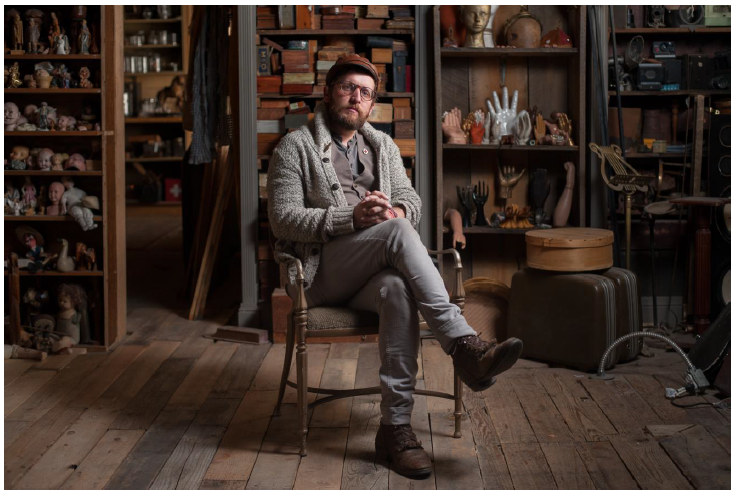Drake Withers and Robert Machoian Graham, Deptartment of Design
Introduction
The intent of my project was to gain insight on the position of The Arts in today’s society. Of particular interest were three questions: First, what does an artist go through in order to build and maintain a successful career? Second, is such a career practically viable, and is there room for everyone who wants to participate? Finally, is such a career valuable, or should art be pursued as a hobby only? My journey was to be shared in a photographic documentary, with accompanying text. (In the final project, audio was substituted for text). This subject is important to me because I am myself attempting to build a career as a photographer. In my paradigm, art and visual communication are of critical importance. However, artists often feel unappreciated and discouraged by our society’s emphasis on technical fields.
I discovered a new and growing collective of artists in Provo, Utah, called The Boxcar Studios, which provided the perfect space for long-term exploration. The collective is composed of a variety of artists, all at different points in their artistic careers. Its members have had a variety of different experiences and hold a variety of opinions about art and its role in society. Most of all, The Boxcar Studios presents a unique way to make an artistic career financially viable, especially during the difficult few years that compose the beginning of such—by joining together, they are able to achieve more than if they remained independent.
Methodology
The two tools that I used to examine the abovementioned questions were observation and conversation. The members of The Boxcar Studios welcomed me into their space, both physically and emotionally—they were open and communicative with me and shared themselves intimately, in a way that helped me gain a good understanding of their lives, feelings, and situations. My research was therefore qualitative, and not quantitative.
Results
I documented my experience at The Boxcar Studios with a camera and an audio recorder. I took over 11,250 photographs, which were mainly candid and observational. I also recorded over 8 hours of audio, mainly in the form of interviews. These materials are being compiled into a 15-minute audio/video slideshow presentation that will attempt to convey the most important parts of my observations with great clarity. 6-minute cuts of each personal interview will also be preserved in order to allow greater exploration of the insight that each artist’s personal experience yields.
Discussion
As I explored The Boxcar Studios’ unique answer to the challenges that our society presents to artists, I was able to answer the central questions of my investigation, at least to a greater degree than before I carried out this project. I discovered that success in an artistic field requires tenacity and perseverance and that in many cases the artists experience personal privation and extended periods of frustration and disappointment in order to bring about the art that they are moved to create. I discovered that, by
combining resources, artistic careers can be financially viable. By existing in a group, members of The Boxcar Studios are able to experience full personal artistic freedom in a place surrounded by other artists. Finally, I learned that the art they are producing is of great personal significance, and communicates genuinely in ways that are more human than words.
Conclusion
I, of course, believe that art and visual communication are vital to our culture and existence as human beings. The observations that I was able to make during the execution of my project seem to support that opinion. I believe that the viewer of my documentary presentation will be inclined to consider art as an important means of communication, and will be more inclined to appreciate those who spend their careers making it.
The ORCA funds were instrumental in allowing me to execute this project. Besides helping me to acquire the necessary equipment, the money allowed me to spend more time researching than working the various jobs that I otherwise depend on for my monthly expenses.
Thank you, ORCA!
The presentation is in the final stages of editing and compositing. I will send a copy to the Office of Creative Research and Development upon its completion. For now, here is a portrait of the man behind The Boxcar Studios, Jake Buntjer:

